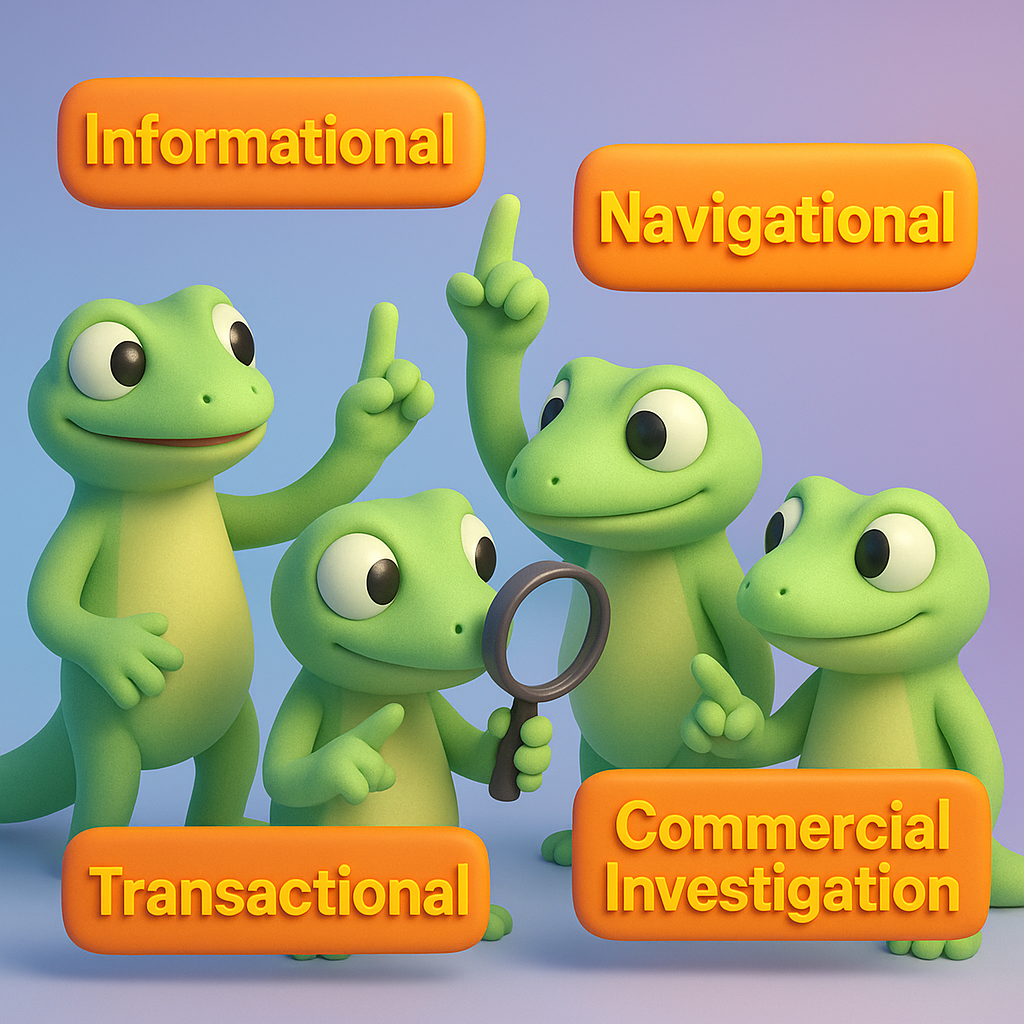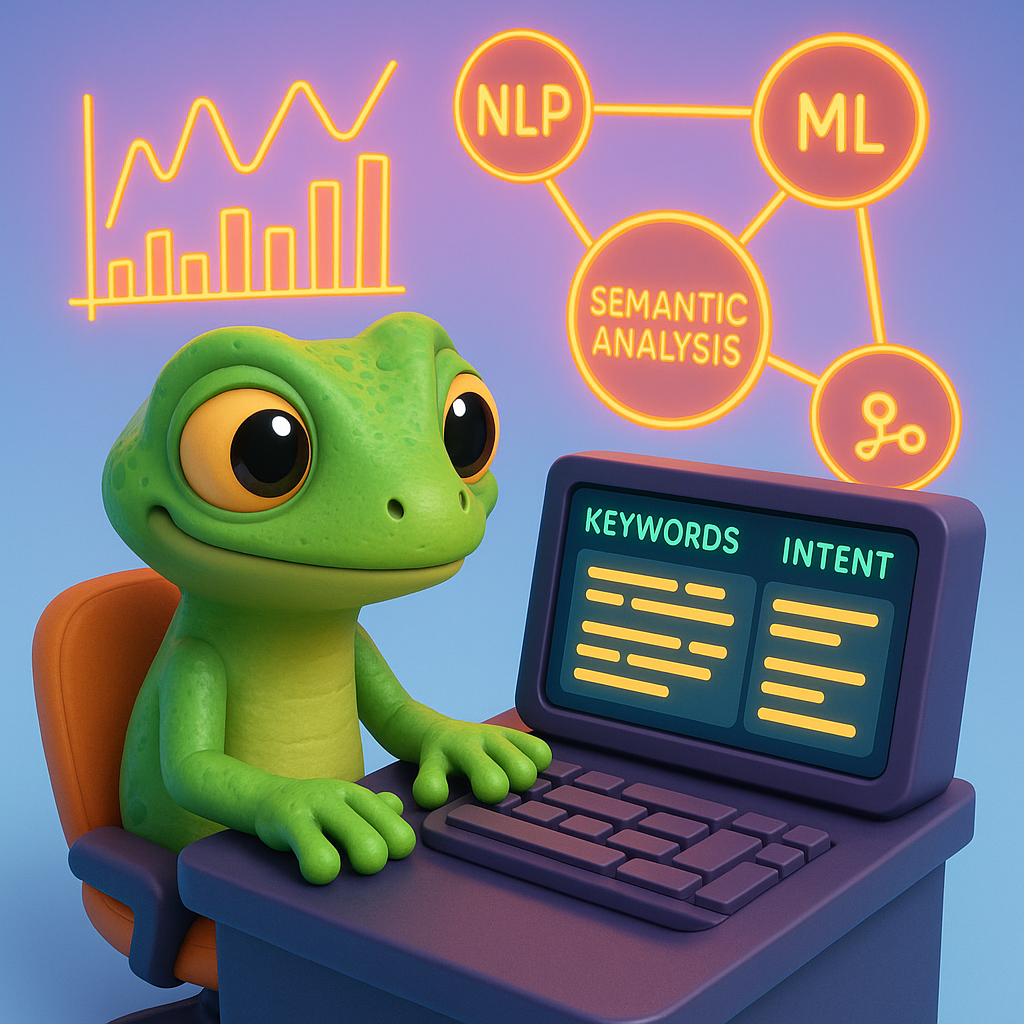The Role of AI in Search Intent Prediction for SEO Strategy
What is Search Intent and Why it Matters
Search intent represents the underlying purpose behind a user’s search query. In the era of large language models (LLMs) and AI-driven search engines, understanding intent has become more complex yet more critical than ever. As LLMs increasingly mediate content discovery, marketing leaders face a fundamental shift in how users find and interact with information.
Search intent typically falls into four main categories:
- Informational intent - Users seeking knowledge or answers
- Navigational intent - Users looking for a specific website or page
- Transactional intent - Users ready to make a purchase
- Commercial investigation - Users researching before a purchase decision

With traditional search losing ground to AI-powered alternatives, marketing professionals must adapt their SEO strategies. According to Harvard Business Review, 58% of consumers now use generative AI for recommendations, up from just 25% in 2023, while research on LLM search shows AI overviews can reduce website clicks by up to 34.5%.
AI Techniques Driving Search Intent Prediction
Natural Language Processing (NLP)
NLP forms the foundation of modern search intent prediction by analyzing the semantics and context of queries:
- Contextual analysis - Resolves ambiguities (e.g., distinguishing “Apple” as fruit vs. company)
- Query parsing - Breaks down complex queries into core components
- Semantic understanding - Identifies relationships between keywords and entities

Tools like BERT process entire sentences rather than individual keywords, enabling more nuanced intent detection with over 90% agreement with human-labeled intent classifications. This represents a quantum leap from keyword-focused SEO to context-driven optimization.
Consider a query like “best running shoes for flat feet” - traditional systems might focus on “running shoes” as the core concept, but modern NLP understands the medical condition (“flat feet”) represents a critical intent modifier that significantly changes what constitutes a relevant result.
Machine Learning Models
Several ML architectures excel at intent prediction:
- Transformer models (BERT, GPT-4, Claude) - These models excel at contextual understanding, with studies showing they can achieve >90% accuracy in intent classification tasks
- Supervised learning - Trained on human-labeled intent categories using SERP data
- Unsupervised learning - Clusters queries by intent patterns without predefined labels
The most significant shift is the emergence of “generative intent” in AI interactions, with research on LLM search patterns showing 37.5% of ChatGPT interactions involve generative tasks (e.g., “create a marketing plan”) versus just 0.6% transactional intent in traditional search.
Semantic Analysis
AI-powered semantic analysis evaluates relationships between:
- Keywords and entities
- User context (device, location, search history)
- Content relevance signals
This enables the identification of high-revenue intent patterns (e.g., distinguishing “enterprise password management software” as a high-conversion intent signal) far more effectively than traditional keyword research.
For example, semantic analysis can detect that a search for “vitamin D deficiency symptoms” likely has informational intent, while “vitamin D supplements with K2” signals commercial investigation intent, despite both queries containing similar keywords.
How Machine Learning Models Contribute to Intent Detection
Intent Classification
ML models classify queries into intent categories with increasing precision:
- Binary classification - Simple informational vs. commercial
- Multi-class models - Refined categories with purchase likelihood scoring
- Hybrid approaches - Combining rule-based and ML techniques
According to AccuRanker research, modern ML models outperform rule-based systems, though 100% accuracy remains unattainable due to human disagreement (up to 40%) on intent classification. This highlights the inherent complexity of human search behavior - even human experts frequently disagree on the primary intent behind certain queries.
Dynamic Query Context Analysis
Modern AI analyzes multiple contextual dimensions:
- User history - Past searches and behaviors
- Temporal factors - Time of day, seasonality
- Device signals - Mobile vs. desktop differences
- Location context - Geographic and cultural factors
This multi-dimensional analysis enables far more accurate prediction than traditional keyword-only approaches, allowing content to be tailored to specific user needs.
For instance, a search for “coffee shops” on mobile at 8 AM likely has immediate transactional intent (the user wants directions to a nearby coffee shop), while the same search on desktop at 8 PM might indicate commercial investigation (researching options for a future visit) - AI systems can now detect and respond to these subtle differences.
Challenges in AI-Based Intent Prediction
Despite advances, significant challenges remain:
Query Ambiguity
Many queries can reasonably map to multiple intents:
- Mixed intent SERPs - “Best headphones” could indicate reviews, comparison, or purchase intent
- Evolving intent - User intent may shift during a search session
- Cultural nuances - Intent varies across regions and demographics
Human experts disagree on intent classification up to 40% of the time, making perfect AI prediction impossible. This is particularly evident in queries like “weight loss,” which simultaneously supports informational content (how to lose weight), commercial investigation (comparing programs), and transactional intent (purchasing supplements or services).
Evolving User Behavior
As search behavior changes, models must adapt:
- Shift to conversational queries - “What’s the best pizza near me that delivers gluten-free options?”
- Voice search impact - More natural language patterns
- AI-specific interactions - New patterns in ChatGPT vs. Google
The rise of generative intent (37.5% of ChatGPT interactions) requires entirely new prediction models compared to traditional search. Users aren’t just seeking information; they’re asking AI to create content, solve problems, or generate ideas - fundamentally different behaviors than traditional search patterns.
Data and Bias Concerns
AI intent models face several operational challenges:
- Data sparsity - Limited training data for niche or long-tail queries
- Algorithmic bias - Models may perpetuate historical biases
- Over-reliance risk - Excessive automation may miss emerging trends
As noted by optimization experts, “Over-reliance on LLMs risks generic content and loss of brand voice,” requiring balanced human oversight. The most effective approaches combine AI efficiency with human creativity and judgment, particularly for high-stakes content decisions.
Practical Applications for SEO Professionals
Keyword Targeting Enhancement
AI-powered intent prediction transforms keyword research:
- High-intent identification - Finding terms with stronger conversion potential
- Content-type matching - Aligning content format with intent signals
- Competitive gap analysis - Discovering unmet intent opportunities
Using free keyword clustering tools can dramatically accelerate this process, processing thousands of keywords in minutes rather than days of manual work. This enables SEO teams to focus on strategy rather than mechanical tasks, while discovering intent patterns that would be invisible to manual analysis.
Content Optimization Strategies
Content can be precisely aligned with detected intent:
- Intent-matched formatting - Structuring content for specific intent types
- Content hierarchy planning - Organizing information based on intent signals
- Answer optimization - Crafting content specifically for AI overviews
With tools like ContentGecko’s AI writer, teams can generate intent-optimized drafts that incorporate both traditional SEO elements and LLM-friendly structures. This dual optimization approach ensures content performs well both in traditional search and in AI-mediated discovery systems.
For example, informational content might feature clear definitions and step-by-step explanations optimized for featured snippets, while commercial investigation content would emphasize comparison tables and decision-support elements that align with that intent.
LLM Optimization Techniques
As search increasingly relies on LLMs, optimization strategies must adapt:
- Prompt engineering - Creating content that performs well when retrieved by AI systems
- Factual authority signals - Building content AI systems recognize as authoritative
- Semantic structuring - Organizing content for optimal AI comprehension
According to research on comparing traditional SEO vs LLMO techniques, “The best content strategies in 2024 combine proven SEO fundamentals with comprehensive, context-driven LLMO techniques.” This hybrid approach recognizes that both traditional search and AI-mediated discovery remain important traffic channels, requiring parallel optimization strategies.
Measuring AI Intent Prediction Success
Performance Metrics
Effective measurement includes:
- Intent classification accuracy - Agreement with human-labeled intents
- Content-intent alignment - How well content matches user intent
- Conversion rate by intent type - Measuring business impact of intent targeting
Using an SEO ROI calculator can help quantify the business impact of improved intent targeting. This moves the conversation from technical metrics to business outcomes, helping marketing leaders justify investment in advanced intent optimization strategies.
Tracking LLMO Performance
New metrics are emerging to track performance in AI-driven search:
- AI citation frequency - How often content is cited in AI responses
- LLM visibility - Content retrieval rates in AI systems
- AI-driven traffic - Referrals from AI search platforms
Specialized tools for monitoring LLMO performance provide visibility into these emerging metrics. As AI-mediated discovery grows in importance, these measurements will become as critical as traditional SEO metrics like rankings and organic traffic.
TL;DR
AI is revolutionizing search intent prediction through advanced NLP, machine learning, and semantic analysis techniques. While traditional SEO remains important, the rise of LLM-powered search demands new optimization approaches focused on conversational content, factual authority, and AI-readable structures. Marketing leaders should integrate both traditional SEO and LLMO techniques, using AI-powered tools to accelerate keyword research, content creation, and performance measurement while maintaining human oversight for quality and brand consistency. The future belongs to organizations that can effectively leverage AI both for intent prediction and for content optimization in this rapidly evolving landscape.
